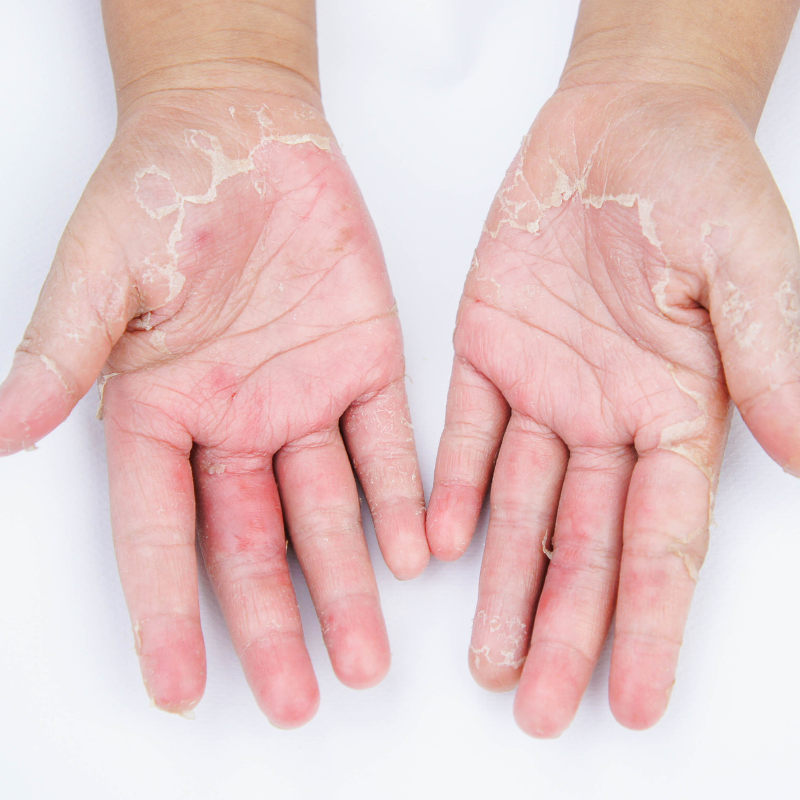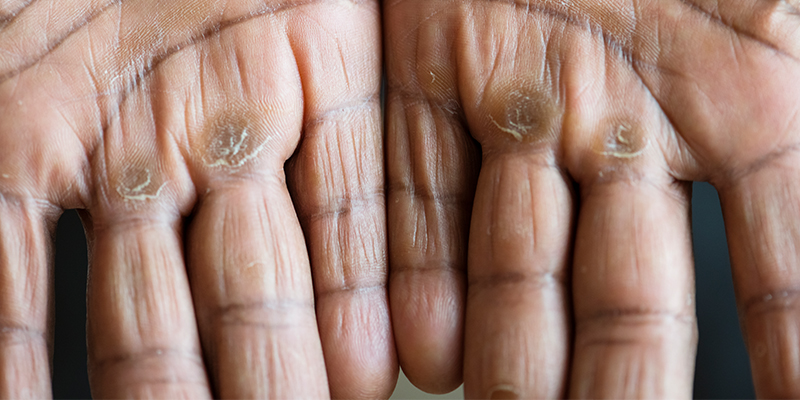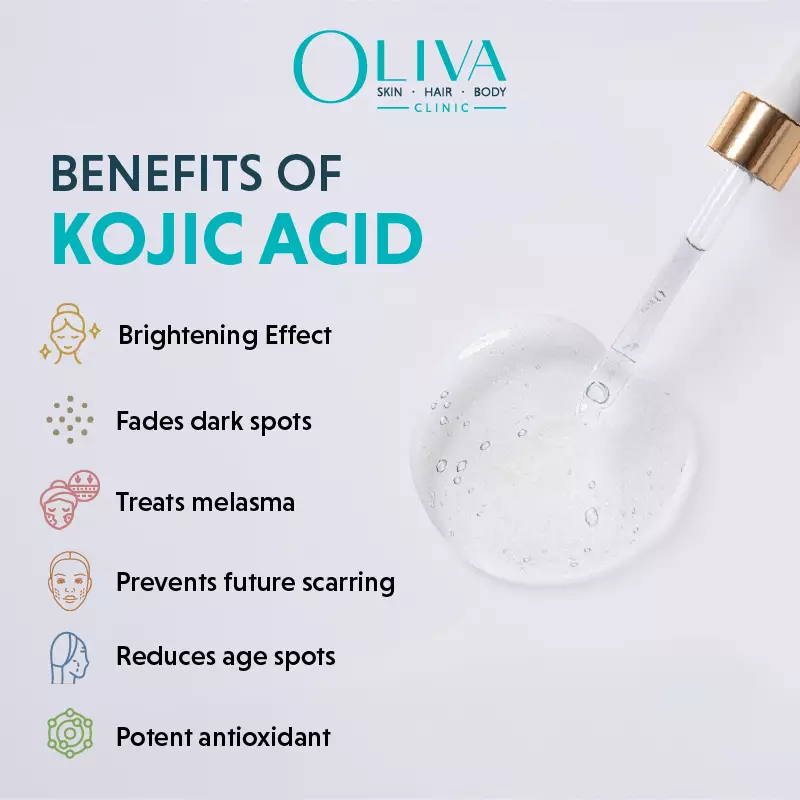In This Article
Spider Angioma – Causes, Symptoms And Treatment
Spider angioma is a condition of clustering of small dilated blood vessels present close to skin’s surface. This group of clustered vessels look like a spider web, with a central spot, thus the name. This Spider angioma condition can be caused due to various reasons such as hormonal changes, medical conditions, excessive sun exposure, and injuries. Although in most cases it is a harmless condition, but it may some time cause pain and discomfort. Therefore, it is important to seek medical help through an expert dermatologist before the condition worsens.
In This Article

What Is Spider Angioma?
Spider Angioma is also known as nevus araneus, spider nevus, vascular spider, and spider telangiectasia. They appear as swollen blood vessels beneath the surface of the skin. You can identify them as a mild skin condition that appears as a red spot/bump on the surface of your skin with visible grouping of clustered blood vessels.
A central vessel, called feeder, typically dilates and separates into multiple vessels, representing a spider’s web. Pressing on the feeder causes the lesion to temporarily disappear but it is refilled with blood as soon as the pressure is released. This condition is very common in children, and, in most cases, it usually disappears after hitting puberty.
Also Read: Know About The Spider Angioma By A Dermatologist
Symptoms Of Spider Nevus
Spider angiomas looks like a reddish dot with thin vessels spawning out on the surface of your skin. It appears like a spider’s web and is typically red, blue or sometimes even purple in colour. It mostly appears in the following parts of the body –
- Neck
- Upper trunk
- Ear
- Forearms
- Face (below eyes and over cheekbones)
- Hands (back of hands and fingers)
You may observe single or multiple lesions due to this condition, and each spot is almost 1-10 mm.
If left unattended and when the condition gets serious, you may experience aching/burning around the lesion, especially if it is on the leg. Sometimes this condition may also cause bleeding, thus is it important to consult an expert and find an accurate treatment of this condition before it goes out of the hands.
Also Read: Types Of Skin Lesions
Causes Of Spider Angioma
What causes spider angioma is rather unclear, but there are certain factors which are possible triggering points such as hormonal fluctuations, severe injuries, excessive sun exposure, and underlying medical issues, such as liver disease. In some cases, this condition appears during pregnancy because of high estrogen levels in the body. The following pointers highlight the causes of spider angioma.
- Liver diseases, such as liver cirrhosis, can result in formation of numerous clusters of vessels on the skin at a time. It has been observed that almost 33% of people who were affected by liver cirrhosis, experienced spider angiomas
- High estrogen levels in the body can show appearances of several lesions, as the liver is not capable to metabolize circulating estrogens beyond a certain amount. The dilation of vessels that is observed in this condition is due to high estrogen levels in the body.
- Due to failure of the sphincteric muscle, which surrounds a cutaneous arteriole
- Due to severe Injuries
- Excessive exposure to sun rays
- Due to significant hepatic diseases
Also Read: How To Take Care Of Skin From Sun?
Diagnosis Of Spider Angioma
Typically, in most cases, the appearance of the lesions on the surface of the skin, with visible clustering of vessels, is all that is required to judge that it is spider angioma. In some cases, dermatologist’s conduct biopsy to confirm of the condition. In addition, the dermatologist analyzes your medical history and genetic disposition to determine the severity of the condition.
Furthermore, you are also diagnosed for liver disease, and if your dermatologist suspects liver issues then your blood sample is taken to understand your condition thoroughly. The liver has a lot of responsibilities, such as helping in digesting food, detoxifying blood, and producing proteins, and any issue with the liver can trigger a lot of problems, spider angioma being one of them.
Treatments For Spider Angiomas
Mostly, cases of spider angiomas are asymptomatic, and are very common in children. But, they can take years to disappear. This condition is usually associated with several causes, such as severe injuries, sun exposure, pregnancy, and liver issues.
There are some temporary solutions that are available, such as electrocautery, which help in removing lesions, but may not be completely safe.
Laser treatment – The most popular treatment that is used to heal spider angioma is the Nd: YAG laser, which penetrates through the skin and infuses into the blood vessels. It is a USFDA approved laser technology. The heat energy from the laser is used to coagulate the blood inside the vessels, which causes it to collapse. Then, after a few weeks, these vessels disappear, along with the lesions, and the blood is cleared up by the scavenging cells for the body.
This entire process happens without causing any damage to the skin that is close to the affected area. A local anesthesia is used to ensure that there is no discomfort caused during the treatment. You still might feel a slight tingle during the treatment, but, with the latest technology, the lasers come with a cooling system, that helps in neutralizing the heat energy and preventing your skin from any burns or damage
Hypodermic needles – Hypodermic needles can also be used to prick the center of angioma to open the dilated arteriole, such that the blood flows freely and then slowly the arteriole will soon shrink and disappear. This treatment is a little painful one, but it leaves no scars on the skin.
Also Read: How To Find A Dermatologist?
Prevention
Spider angiomas cannot really be avoided and it is very difficult to come up with preventive measures. If you have the tendency of having weak blood vessels due to genetic predisposition, then you are likely to be affected by this condition. Having said that, there are some ways that could help in decreasing the likelihood of the appearances of the lesions caused by this condition – limit sun exposure, control alcohol consumption,
Spider angiomas may be unavoidable, as one risk factor is simply ageing. If your family has a genetic condition for weak blood vessels, this could also cause them to appear. There are no specific preventative measures known, but you may decrease the likelihood of their appearance by avoiding hormone therapy –
- Protecting your skin from the sun and applying sunscreen on the commonly affected areas, such as legs, face, and neck
- Controlling your alcohol consumption
- Avoiding hormone therapy
- Ensuring that you take measures to have a healthy liver
Also Read: Sunscreen – SPF 30 Vs. 50
Frequently Asked Questions
Yes, spider angioma is usually harmless and fades away with time. It usually occurs during childhood and disappears after hitting puberty. But, it is important to seek medical help on seeing signs of this condition as sometimes spider angioma can turn out to be very painful and can cause a lot of discomfort.
The following are the risk factors –
- Age: Old age tends to weaken the valves in the blood vessels, which later leads to spider angioma
- Hormonal changes: Hormonal fluctuations due to pregnancy, puberty, menopause, or intake of contraceptive may mess up the amount of estrogens in the body, which causes development of spider angioma
- Liver issues: Liver issues results in formation of several groups of clustered blood vessels at a time
- Sun exposure: Excessive exposure to sun is also a trigger point for this condition
- Family history: Though, spider angioma is not directly hereditary, but if your genetic predisposition indicates probability of this condition, then you would possibly be affected by this condition.
- Obesity: Your weight influences the pressure that’s applied on the blood vessels, and thus obese people are likely to be affected by this condition
- Immobility: In some cases, if the condition of spider angioma worsens, then sitting or standing for a longer period of time can cause discomfort, as it inhibits blood circulation.
Spider angiomas is a condition that affects both children and adults and is more evident in light-skinned people. Almost 50% of children develop this condition at some point in their childhood.
Also, there is a high probability of people with liver issues and high estrogen levels to be affected by this condition.
Yes, on compressing the central vessel produces blanching and dilutes the lesion temporarily.








